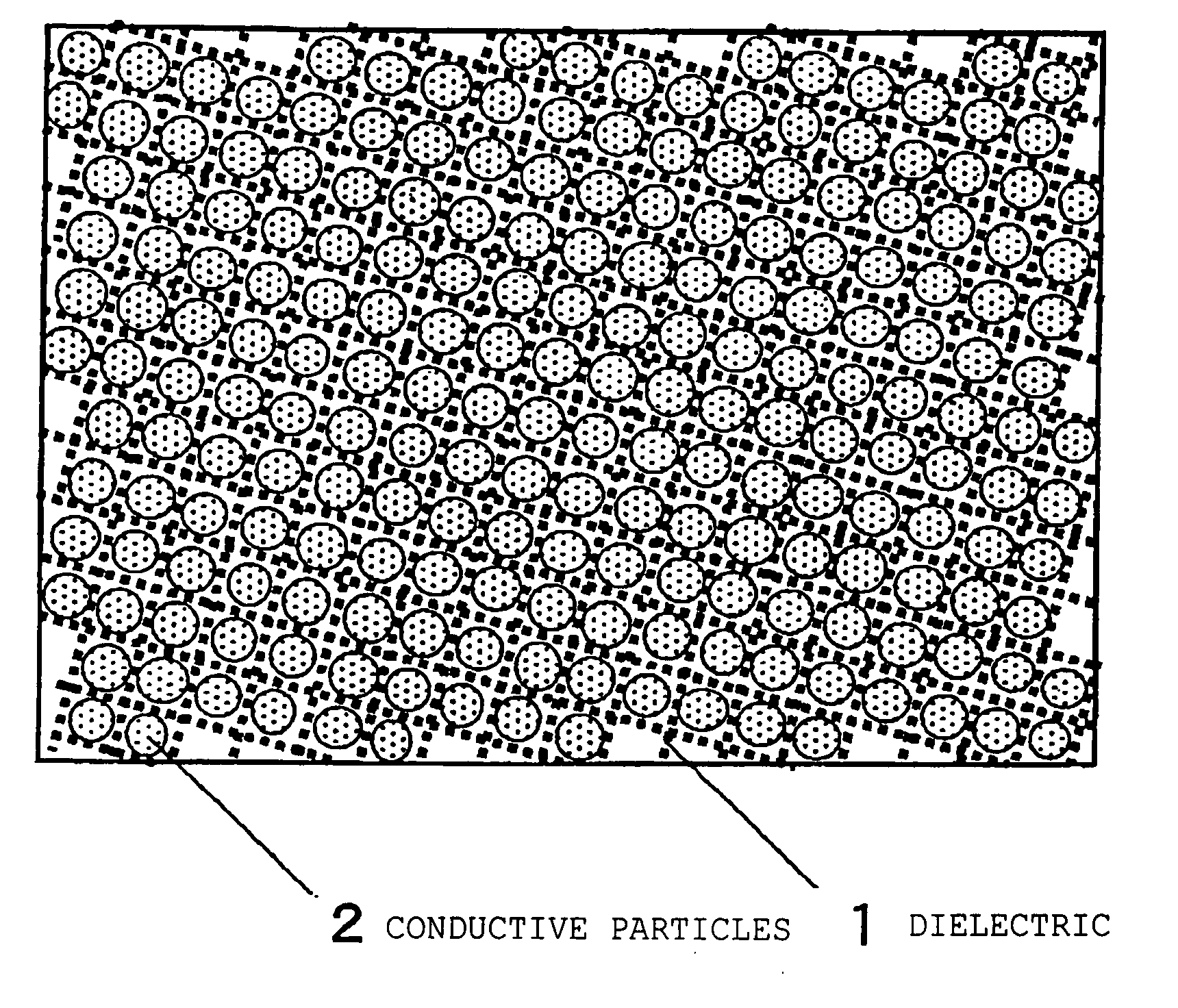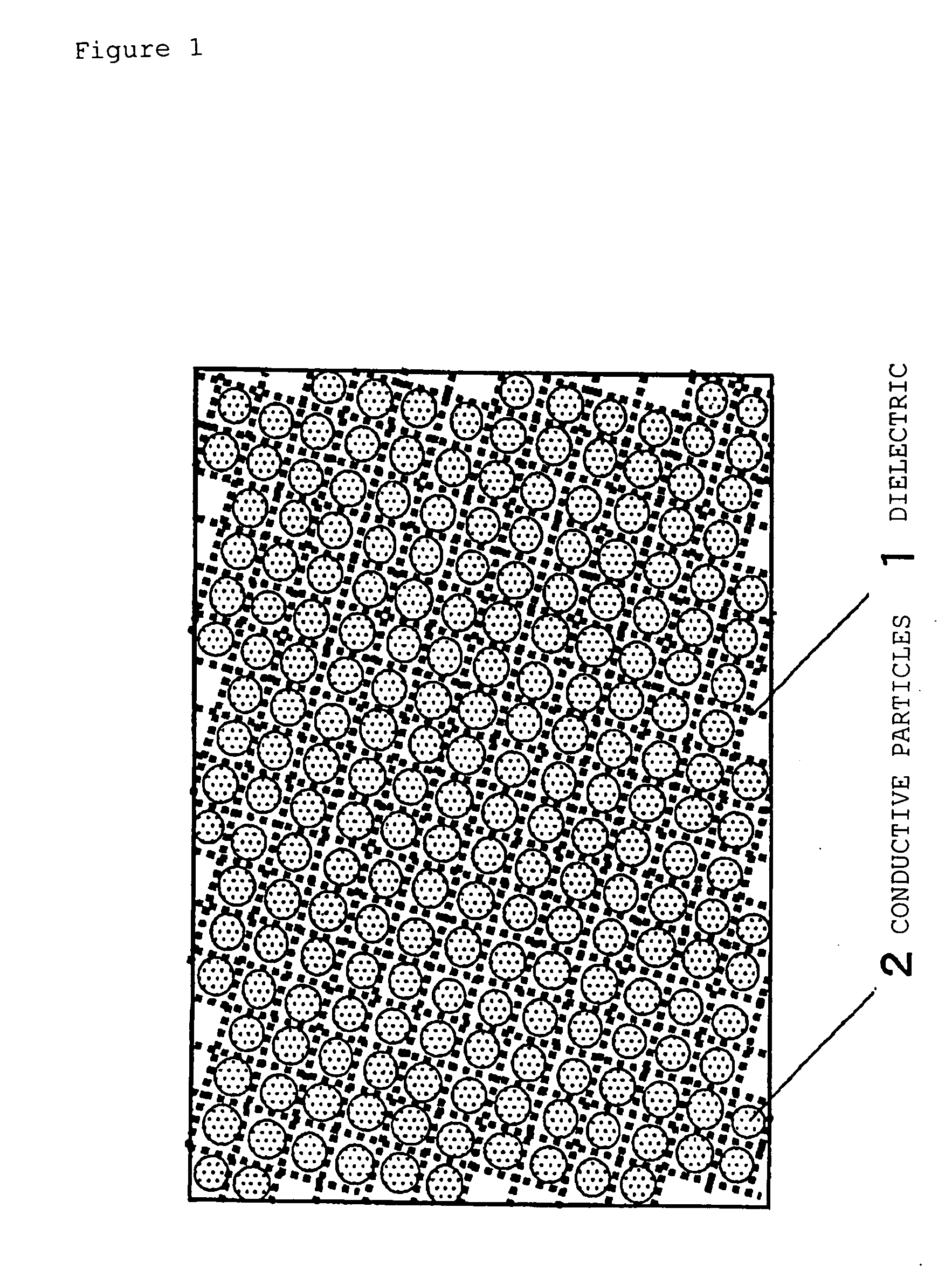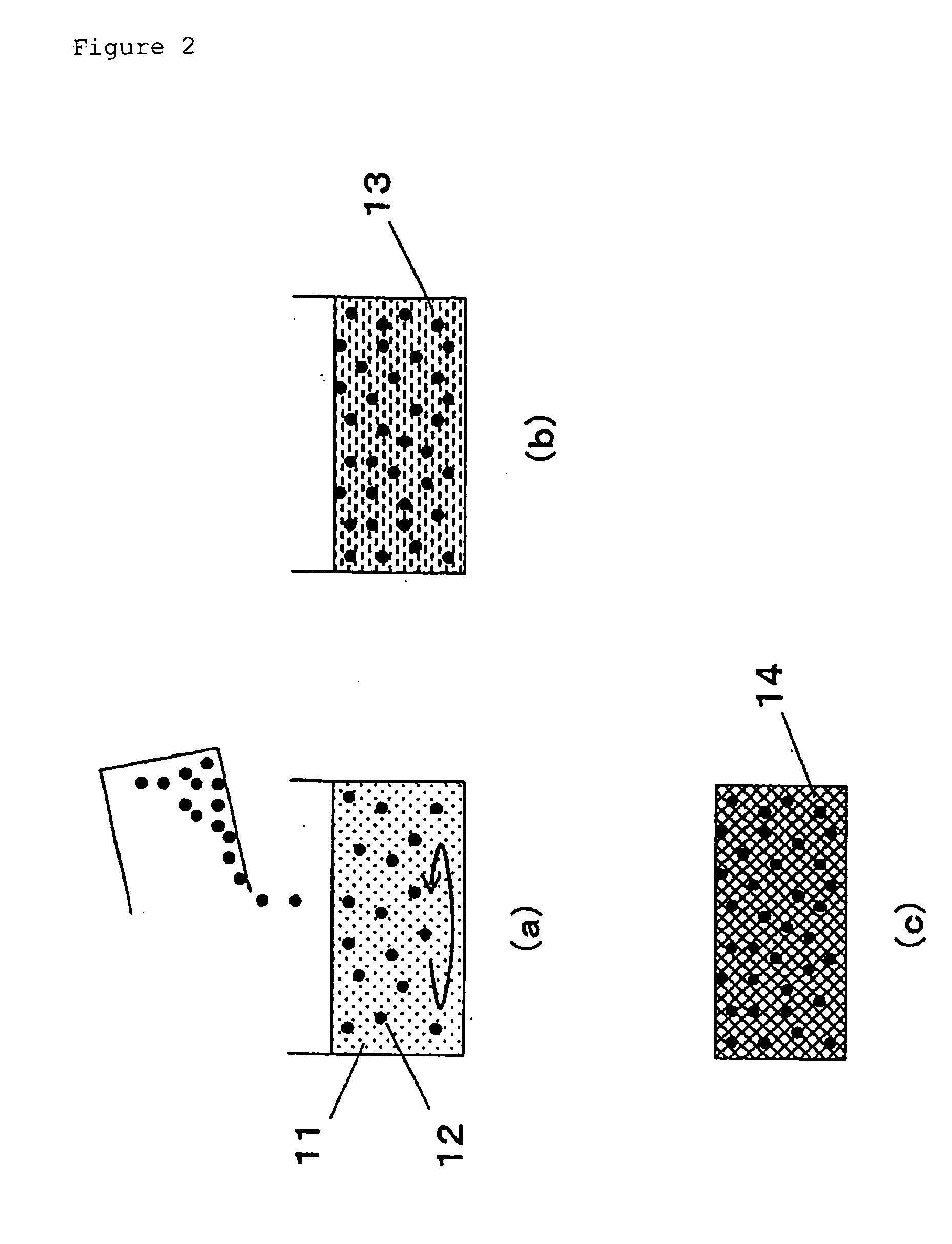Composite dielectric and manufacturing method therefor
a dielectric and composite technology, applied in the field of dielectrics, can solve the problems of high dielectric constants, high dielectric loss, and difficult to use materials with high dielectric constants in high frequency bands, and achieve the effects of low dielectric loss characteristics, high dielectric constant, and superior characteristics
- Summary
- Abstract
- Description
- Claims
- Application Information
AI Technical Summary
Benefits of technology
Problems solved by technology
Method used
Image
Examples
embodiment 1
[0043] The composite dielectric of the present invention is explained using FIG. 1. FIG. 1 is a figure explaining an example of the composite dielectric of the present invention, which consists of dielectric 1 and conductive particles 2 which are dispersed in dielectric 1. A porous body is preferably used as dielectric 1. Using a porous body allows the apparent resistivity to be increased over that of a bulk material having the same composition.
[0044] When a porous body of porosity v is sliced on any surface, the proportion of cross-sectional area S0 occupied by the framework appearing on the surface (area s) is statistically s / S0=(1−v)2 / 3. Thus, if the resistivity of the material forming the porous body is ρ0, the apparent resistivity ρ of this porous body is expressed as ρ=ρ0 / (1−v)2 / 3. It is thus possible to form a matrix having a higher resistivity than the bulk material, thereby reducing leakage current and providing a composite dielectric with low dielectric loss.
[0045] Silic...
embodiment 2
[0053] In a second embodiment of the present invention, a dry gel is used for the porous body of the first embodiment.
[0054] In the porous body of the present invention, it is desirable from the standpoint of dispersibility, support of the particles and formation of spaces between particles at high packing densities to use a material with many nanometer size pores and nanometer size structures. One such desirable material is a dry gel obtained by the sol-gel method.
[0055] A dry gel is a porous body formed by a sol-gel reaction, which is formed by drying to remove the solvent from a wet gel composed of a solid skeleton solidified by reaction of a starting solution for the gel and containing a solvent. The dry gel is a nanopore material wherein continuous pores having a mean diameter in the range of a few 100 nanometers or less are formed by means of a solid skeleton composed of particles 100 nm or less in size. By minimizing the solid components it is possible to achieve an extreme...
embodiment 3
[0080] An embodiment of the manufacturing method of the present invention is explained using FIG. 2.
[0081] Conductive particles 12 are added to gel stock solution 11, which was prepared with a specific composition, and dispersed by agitation. Because the permeability of gel starting solution 11 is high as long as its viscosity is low, the solution permeates the spaces between conductive particles 12. As the solution permeating these spaces gels, a porous body forms between conductive particles 12, insulating conductive particles 12 from each other. The particles are uniformly distributed within the solution by continuous agitation until the viscosity of the solution rises enough to slow down the sedimentation velocity of conductive particles 12 sufficiently. Gelation is completed with the solution maintained in the same state to produce wet gel 13, which is dried to obtain dry gel 14, wherein the particles are insulated from one another and are uniformly distributed. Due to this co...
PUM
| Property | Measurement | Unit |
|---|---|---|
| relative dielectric constant εr | aaaaa | aaaaa |
| porosity | aaaaa | aaaaa |
| density | aaaaa | aaaaa |
Abstract
Description
Claims
Application Information
 Login to View More
Login to View More - R&D
- Intellectual Property
- Life Sciences
- Materials
- Tech Scout
- Unparalleled Data Quality
- Higher Quality Content
- 60% Fewer Hallucinations
Browse by: Latest US Patents, China's latest patents, Technical Efficacy Thesaurus, Application Domain, Technology Topic, Popular Technical Reports.
© 2025 PatSnap. All rights reserved.Legal|Privacy policy|Modern Slavery Act Transparency Statement|Sitemap|About US| Contact US: help@patsnap.com



